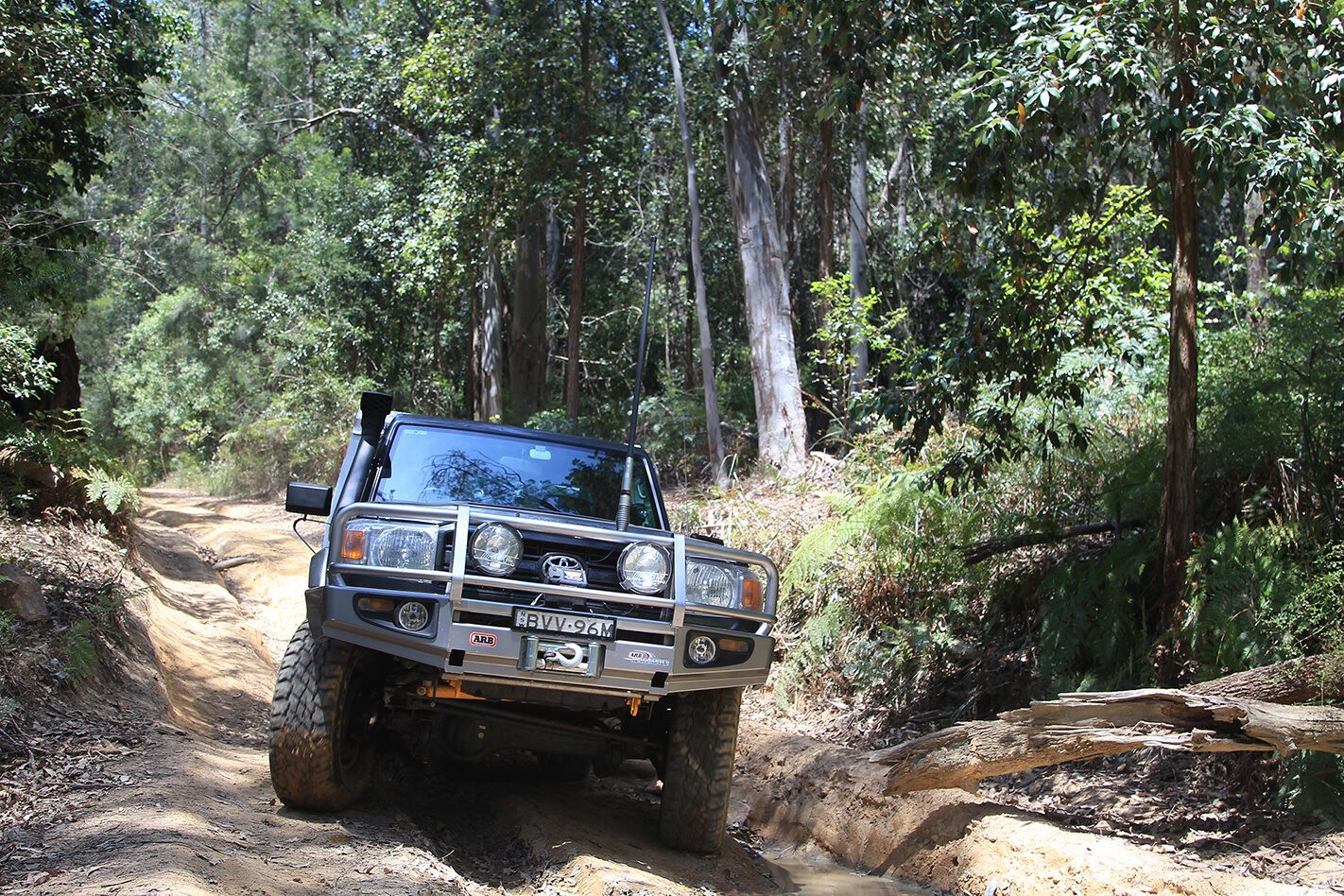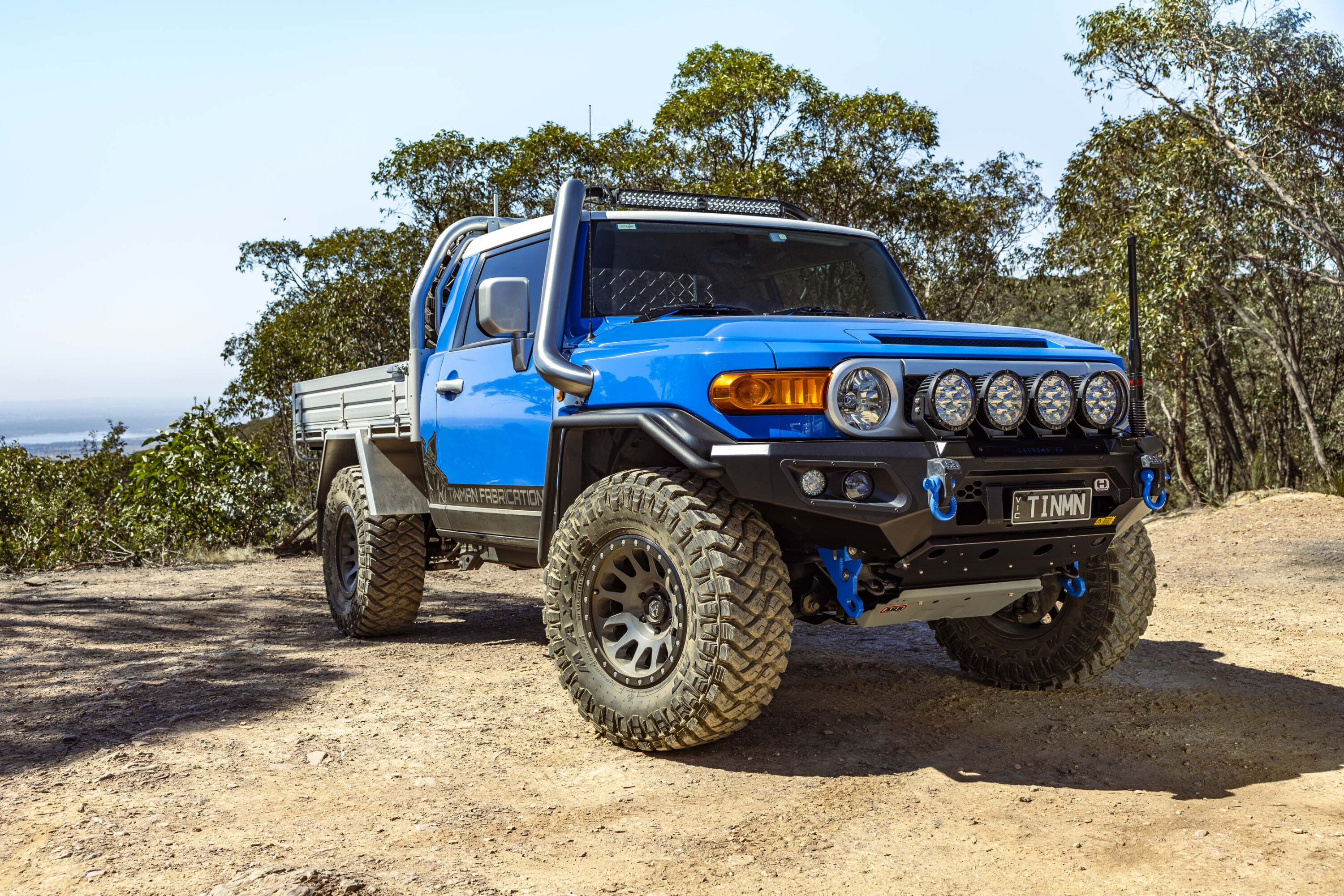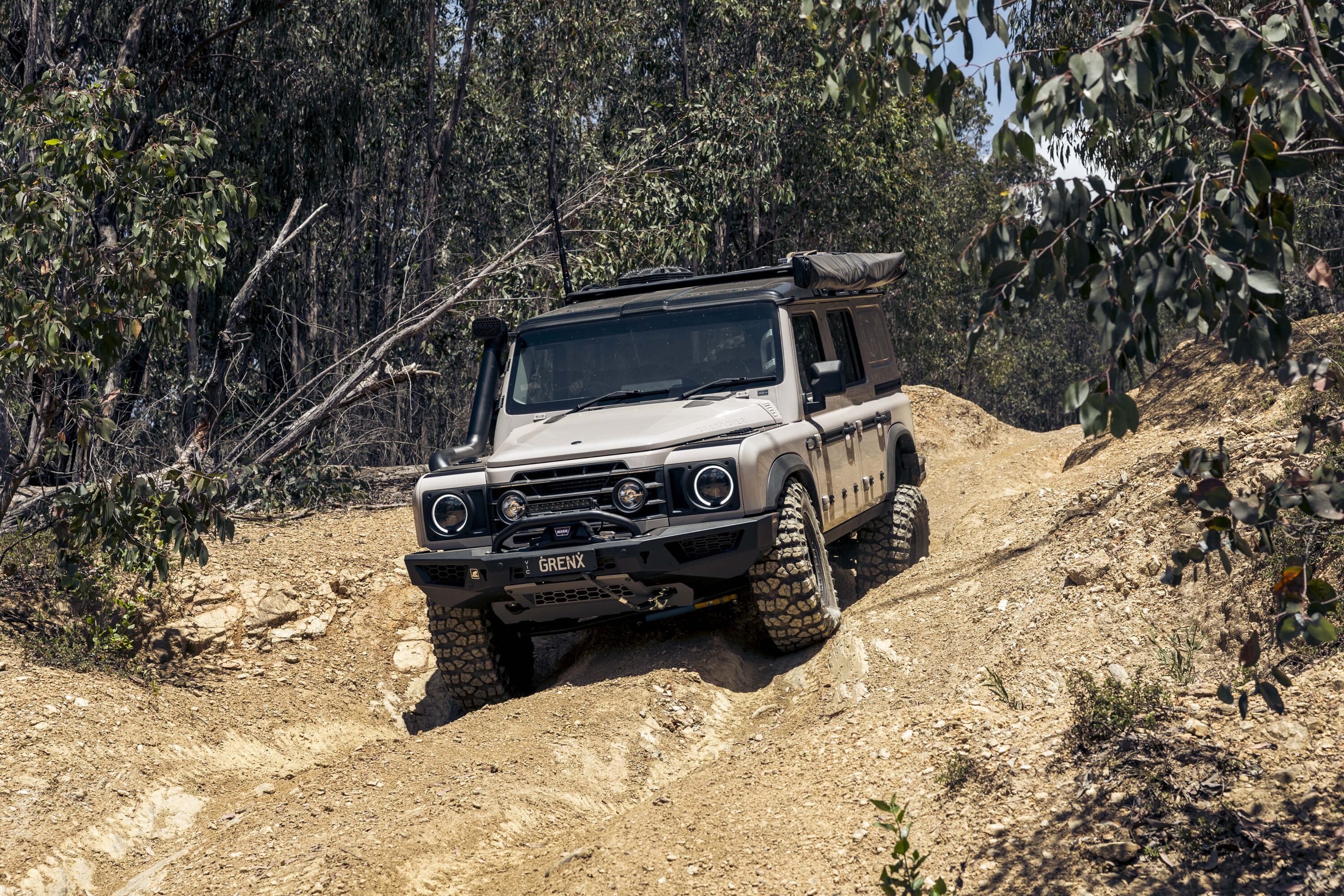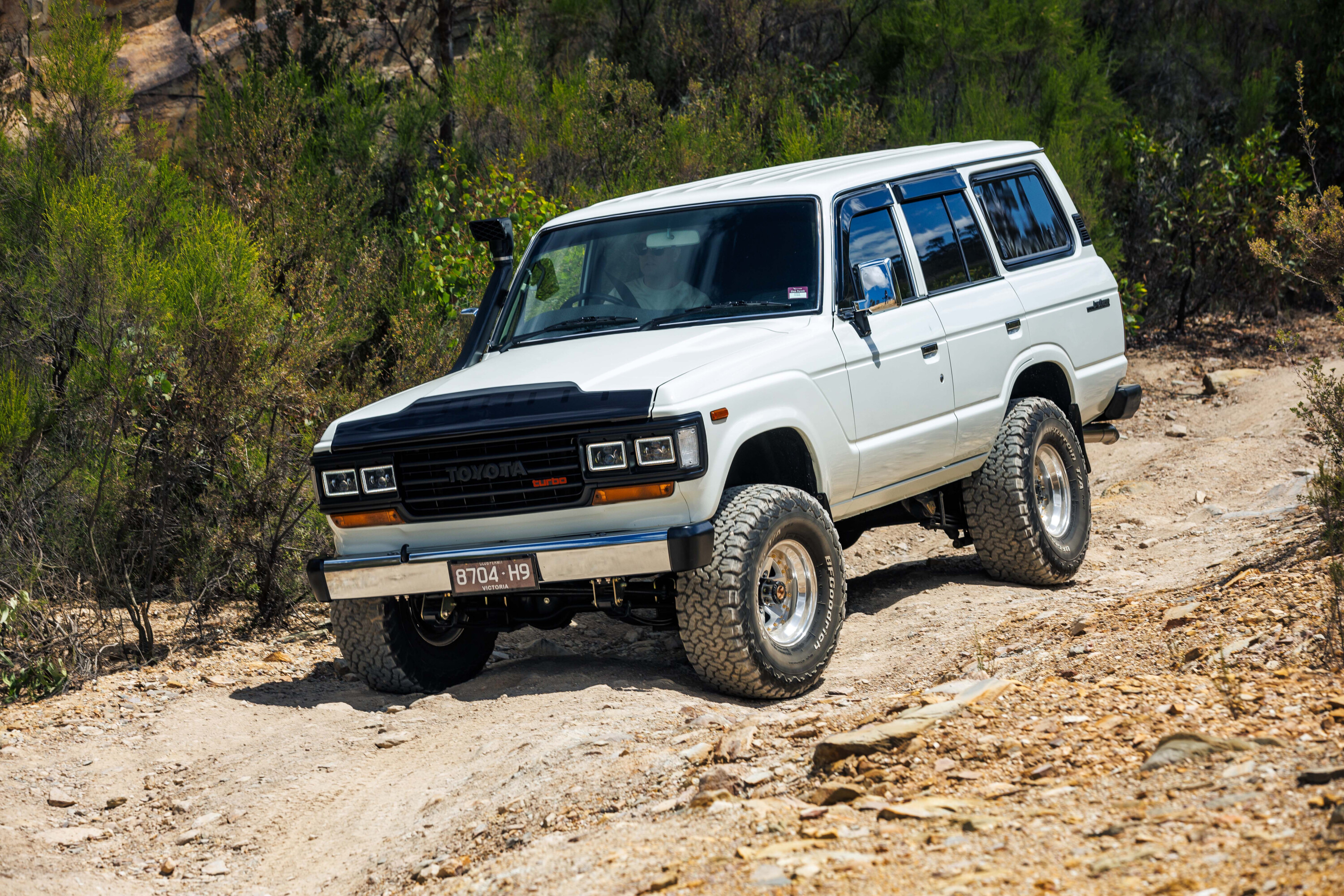MARK and Jane Roots love camping. They used to drive a 4×4 wagon and, although the vehicle itself was set up for touring, it meant their overnight digs required a tent.
This article was originally published in the May 2014 issue of 4×4 Australia
Nothing wrong with camping in a tent, but as the years go by it can be nice to enjoy the great outdoors in comfort.
“We had a Patrol before and when we travelled we used to tent it,” Mark said.
“Long story short, I’ve got arthritis in both knees, so I’m buggered after about a week of sleeping in a tent. So we looked for a slide-on camper. We looked at trailers and different set-ups, but we decided to go with the slide-on and that’s why we bought the ute.”
That ute is a 2011 79 Series Land Cruiser GX, which Mark and Jane purchased new once they had chosen their Outback Camper. Obviously, the Cruiser needed some significant upgrading to handle the weight of the camper, so Mark headed to his nearest ARB outlet and selected the appropriate gear from the Old Man Emu catalogue.
He opted for a two-inch suspension lift using new coils and leaves, new shocks, a sway bar in the rear and a steering damper up front. “I’ve had it on my last two Patrols and I’ve never had any trouble,” Mark said of the OME gear.
At this stage, the Cruiser’s 4.5-litre turbo-diesel V8 is standard, and Mark reckons it’s got plenty of grunt to haul the camper and all their gear. “Years ago the 60 Series had around 89kW of power. My last Patrol had a 4.2 with 114kW and 360Nm of torque… this thing’s got 151kW and 430Nm. What do I want to build, a drag car or something?” he said.
That said, a larger-diameter mandrel-bent exhaust system is on his wish list, along with a chip tune. “It runs beautifully at around the 80 to 90km/h mark but once you start to push to 110 it starts sucking the juice down,” he said.
As for the running gear, the Cruiser has the standard open diff at the front and LSD in the rear; diff locks are also on Mark’s wish list. To keep water out, he’s fitted Piranha breathers to the front and rear diffs, as well as to the gearbox and the transfer case.
While the 79 Series comes standard with a snorkel, Mark fitted a Safari snorkel because the original had “…a join halfway up the guts where it comes out of the mudguard and it turns to go up the A-pillar.”
“I looked at the join and thought if it’s not sealed, the inside of it is not going to be sealed… so rather than try and seal that up – you’re talking about a motor that’s 12 grand or so to replace – 400 bucks (for a Safari snorkel) is cheap insurance. Now it’s a fully sealed unit. Even the drain in the air box is sealed.” Mark said.
The final protection barrier against water is a Water Watch fuel and water separator. The Water Watch separator works by detecting water in the vehicle’s fuel supply prior to it entering the fuel system and, if water is detected, there’s an alarm as well as a light on the dash to warn you. Mark looked at various systems but the alarm feature convinced him Water Watch was the way to go.
As for the tyres, they’re Cooper S/T Maxx all-terrains, and to say Mark is impressed is an understatement.
“They’ve been really good. They’ve done the [Simpson] desert twice and all the roads in between, including a trip to Birdsville and back. The tyres aren’t showing that much wear and tear at all, virtually no sign of chipping. You can see some wear in them, but they’ve done 25,000km or so.
“They work really well too. I haven’t had them in really wet conditions yet, but in sand, gravel and tarmac, there’s no problem.”
Keeping a close eye on tyre pressures is a Tyredog TPMS. This wireless tyre-pressure monitoring system allows Mark to view the pressures or temperatures in all four tyres simultaneously, and it’s great insurance against a blowout.
The Cruiser sports an ARB Deluxe bar up front – a pair of IPF driving lights (one spot and one spread) and a Warn 9.5xp winch running a steel cable are mounted on it. Under the bar are a couple of heavy-duty recovery points.
Hidden by the black box beneath the tray is a spare wheel, a 60-litre water tank and a standard 90-litre fuel tank. Adding to touring range is a Brown Davis 170-litre auxiliary fuel tank, beneath the cab. “It gives a good range and makes life easier. You can drive past places where fuel is really expensive and fill up somewhere cheaper,” he said.
The modifications to this Cruiser continue inside the cab. “I fitted Recaro seats thanks to a ruptured disc in my back,” he said. “They’re just so supportive. I baulked at the price of them when we bought them but they are really good.”
Vehicle-to-vehicle comms are via a GME Electrophone TX3400 UHF, which Mark has used in three vehicles previously and has only ever had to replace the aerial.
A Hema Navigator is mounted prominently on the dash. If they need more detail, Mark also has a Magellan Xplorist 600 that’s loaded up with 1:25k topo maps. “All the maps are backed up on a laptop that.”
Travelling long distances in a single-cab, you soon realise there’s not a hell of a lot of space, so everything needs to go in a predetermined spot.
Helping the cause is a decent storage hole beneath a lift up lid in the centre console, a couple of cup-holders and another open storage binnacle.
“To the front of that, I’ve fitted a two-plug 12 volt outlet that’s hooked up to the second battery in the vehicle,” Mark said.
Finally, up on the roof, there’s an Outback Interiors roof console. There’s plenty of storage space in the camper, but Mark usually fits an ARB roof rack to carry a second spare tyre and provide additional storage for longer trips.
“We’ve got a Pelican case we can put up there with bits and pieces we don’t use that often, but still need, like hoses and fan belts. Or if we don’t need the additional space we just leave it free and put a bit of firewood up there.”
With a decent amount of cash invested in the Cruiser, Mark and Jane like to keep it in the best nick possible so they’ve wrapped it in plastic. “It’s got that vinyl wrap on it, it’s clear and it protects it from stones and bits and pieces,” Mark said.
“We’ve actually got a scratch on the door, but it’s only the plastic that has been scratched. It was wrapped by Altapac, who are based in Kotara (New South Wales).
“It’s only about a thousand bucks, or 1500, and scratches come out with a hair dryer.”
So what’s next for Mark and Jane’s Toyota 79 Series Land Cruiser GX? Well, a solar panel to be attached to the roof of the camper is on the list along with the new exhaust and a chip. With all the mods, they believe they have a touring rig that suits them just fine.
OUTBACK CAMPER
There are plenty of slide-on campers on the market but the simplicity of the Outback Camper design was what attracted Mark and Jane.
“We looked at the Outback Camper and a few others and it just seemed to be the most simple set-up,” Mark said. “It’s got good storage for the kitchen, fridge and other bits and pieces, and basically it was a simple design. It offers a permanent bed arrangement and it’s easy to set up.
“There’s only the two of us and we think it’s a great camper for a couple. Set-up is a matter of four latches; you stick the roof up and you can get inside it. It’s got a tensioning pole inside that holds the back of it out and then you’re basically done.”
The first time they used it, Mark was amazed by how quickly he could pack it away and be on the road. “The first time we packed it up… from the full set-up, with the awning out and everything, it took just eight minutes.”
If Mark and Jane get the urge for a quick cuppa on the side of the road they can extend the awning without having to set up the whole camper. And accessing the stove and other items to get a brew going is easy.
“Basically, it’s got eight storage draws beneath the bed, and below that there’s a slide-out draw system with a gas connection, a two-burner gas stove and a sink connected to a water pump. A couple of containers in the back of the slide-out section have coffee, tea and sugar etc.”
The ARB (Engel) 39-litre fridge is mounted on a slide that drops down as it extends to assist in accessing cold items and there’s room for a couple of gas bottles on the other side.
As for power, the camper has its own 120Ah deep-cycle battery that is connected to the ARB dual-battery set-up in the vehicle. There’s a Ctek battery charger conveniently located in the camper and there’s a heap of space for general luggage, first aid kit, recovery gear and tools on the driver’s side.





